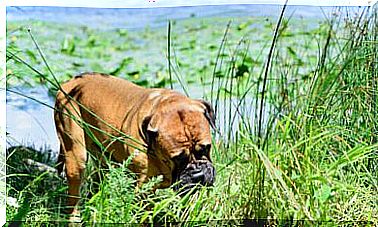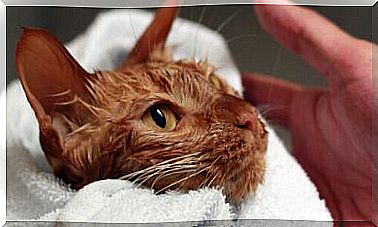Pesticide Spray For Dogs: Why Use It

All responsible owners want their pets to always be well. But sometimes we don’t know what else to do to get rid of fleas or ticks. Have you tried the pesticide spray for dogs? In this article we will tell you more about this method.
Pesticide spray: what you need to know
Among the methods to eliminate fleas or ticks or to prevent mosquitoes and flies from attacking our pets, there are many options. The best known are the pipette, the flea collar and the anti-parasite tablets. But we also have another alternative: the pesticide spray.
It is undoubtedly a more than practical and useful tool for fighting all types of parasites and insects, mainly the most common ones. This product is often used by owners who prefer something practical, even more so than pipettes.
For example, there are many dogs who do not allow their owners to approach with something like a needle – such as the aforementioned pipette – or who vomit up the anti-parasite tablet. There are also cases of pets that do not tolerate the flea collar, as it generates an allergic reaction in the neck.

This method has immediate results and, unlike anti-parasite tablets, sprays can eliminate parasites or insects on the spot. They also act as a repellent if we go to a lawn or park or if your dog spends the summer in the garden!
The bad news is that they don’t have a long-term preventative effect, which means they should be applied more often than the pipette, which lasts about a month.
How to use it?
The way of use is more than simple. Just spray the spray on the dog’s fur and skin. However, it is essential to pay attention to the directions on the package, as it is necessary to avoid that the product comes into contact with the eyes, nose, mouth or ears of the animal. Also, it cannot be applied to a wound, scar or bruise.
The parasite spray is very easy to use, the application is fast and it is also a highly effective method. We can find it in different brands and sizes, some in the form of a vaporizer and others as a spray similar to the mosquito repellents that humans use.
If you are wondering what they are made of, it will mainly depend on the brand, even if there are some components common to all. If you have specific questions about what it contains, it is best to consult with your vet. The professional will know if he has any contraindications for your particular dog.

How does the pesticide spray work?
The pesticide spray works just fine against flies and mosquitoes because its action is immediate. However, it does not always work to eliminate fleas and ticks: it all depends on the composition of the product. Therefore, it is not recommended as a long-term treatment, unless otherwise directed by your veterinarian.
They can be very useful when we go on vacation to a country place. They are also ideal when we walk our dog and go to a park or an outdoor place with a lot of grass and plants where parasites can hide.
One of the main benefits of the pesticide spray is that it can be used on puppies under three months of age, which is not the case with pipettes, collars or pills. Likewise, you should pay attention to what is indicated in the leaflet to know if it is suitable for your pet.
Of course, you should keep in mind that it does not protect animals from leishmaniasis and that it may have side effects compared to the other methods mentioned above.
In these cases, we advise you to use the pesticide spray as a complement to pipettes or collars and to spray it on all the places frequented by your dog, such as the kennel, carpet, cushions, sofa, blankets and even baseboards, where fleas could reside.
Finally, when you are not using it, it is best to keep it in a safe place, as it is toxic.









